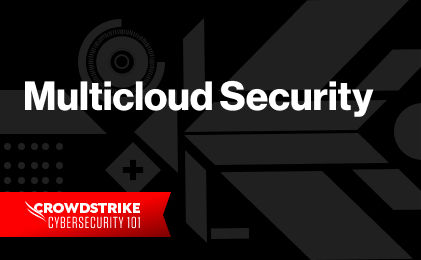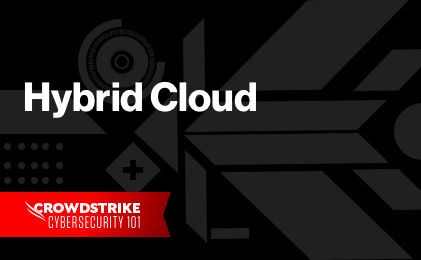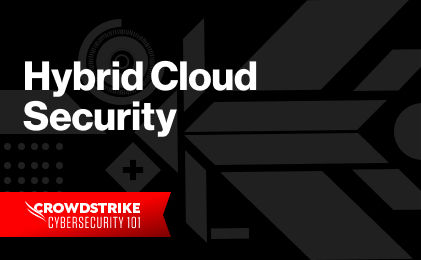Understand CNAPPs with Our Guide
Understand CNAPPs with Our Guide
What Is a Public Cloud?
A public cloud is a third-party IT management solution that hosts on-demand cloud computing services and physical infrastructure using the public internet. There are three cloud model types: software as a service (SaaS), platform as a service (PaaS) and infrastructure as a service (IaaS). Each of these models allows organizations to access resources and technology without hosting them in a corporate-owned data center.
Essentially, public clouds offer companies a chance to virtually rent equipment, software and storage. While companies host private clouds within their own servers, anyone can purchase public cloud services and securely share their use.
How Does a Public Cloud Work?
The way the public cloud works is relatively simple. Customers in need of more capacity, platforms, or resources get its services from a public cloud provider that charges by the byte or by time. This allows companies using a public cloud environment to save lots of money, since they only pay for services they need and when they need them.
Essentially, a public cloud provider becomes the resource manager of its customers. Infrastructure, processing capabilities, applications, storage, among other things are all owned and operated by the provider. All these resources are pulled into a data lake managed by the vendor and then transmitted via the public internet.
3 Types of Cloud Service Providers
- Software as a Service (SaaS): SaaS delivers applications like email and file storage through a web browser. With SaaS, there’s no need to download any software or keep up with updates. Google Workspace and Dropbox are both excellent examples of SaaS cloud services.
- Platform as a Service (PaaS): PaaS gives users a cloud environment to build and deploy apps and databases. You receive software and infrastructure available through the web. Because it provides middleware, development tools and database management, it can support the entire application building process from design to launch and maintenance.
- Infrastructure as a Service (IaaS): IaaS offers users a full range of infrastructure from servers to operating systems and public cloud storage solutions. Organizations access a vast network of hardware through a dashboard and gain full control over the infrastructure — all without the expense of physically maintaining it.

The Maturation of Cloud-Native Security: Securing Modern Apps and Infrastructure
Learn how an integrated defense-in-depth platform fills gaps in inconsistencies, misconfigurations and visibility
Download NowPublic, Private, and Hybrid Cloud
In some cases, a public cloud may not be able to meet all your business needs. For instance, many companies prefer not to use a public cloud to store sensitive data due to security concerns. The following table compares all three cloud environments:
| Cloud Type | Description |
|---|---|
| Public Cloud | A public cloud model is one in which infrastructure is hosted by a third-party service provider and shared by multiple customers or tenants. While each tenant maintains control of their account, data and applications hosted in the cloud, the infrastructure itself is common to all customers. While it tends to be the most affordable, it is also associated with the greatest risk since a breach in one account can jeopardize security across all users. |
| Private Cloud | As the name suggests, a private or single-tenant deployment model is one in which the cloud infrastructure is offered via the private cloud and is used exclusively by one customer. In this model, cloud resources could be managed by the organization or the third-party provider. While it is far more expensive than a public cloud, it is the most leveraged by entities that manage or store sensitive information. This option grants these organizations more control and enhanced security of their data while ensuring compliance. |
| Hybrid Cloud | A hybrid cloud combines a private cloud and a public cloud into one computing environment that shares data. Most public cloud providers, such as Microsoft Azure and the Google Cloud platform, support hybrid cloud integration. While startups and small businesses can often rely entirely on public clouds, older and larger businesses likely have already invested time and money into infrastructure. Still, they could benefit from the extra flexibility and performance that a public cloud offers. By implementing a hybrid cloud, companies can expand without sacrificing previous investments. |
Learn More
Read our 101 post comparing the private and public cloud to further understand which one is a better option for your business.
4 Reasons to Use a Public Cloud
Cloud adoption is on the rise — in fact, according to the Flexera 2021 State of the Cloud Report, 91% of businesses use public clouds. This high adoption rate springs from the benefits of using a public cloud — most notably, they are cost-effective and convenient.
1. Upfront Costs
Creating an IT infrastructure requires a big investment. You need to purchase hardware, software and a location for your servers and equipment. As a public cloud user, you avoid upfront costs. Plus, you only pay for the services your company uses each month.
In addition, you save money on maintenance, and you avoid costs of replacing and upgrading outdated equipment every few years. All those costs are covered by your cloud provider.
2. Scalability
Public clouds are a uniquely scalable infrastructure option. If you choose to purchase your own in-house IT infrastructure, the setup process could take months. Then, when it’s time to grow, you’ll have to buy, set up and maintain more equipment. On the other hand, if your usage drops, you’ll be stuck with underutilized equipment that drains your resources only to collect dust.
Public clouds can keep up with your business needs, whether that means expanding or scaling back. They already have the physical infrastructure in place; all you have to do is purchase access to it. You can scale networking, processing power and data storage capacity all without disrupting your business.
3. Accessibility
Cloud services allow you to access your data, platforms and software from anywhere there’s internet access. Instead of being tied to a desktop or server, you have the freedom to work anywhere you need to by using a public cloud.
They also make it easier to collaborate on tasks and projects. An entire team will have access to the same tools, resources and data — all updated in real time.
4. Reliability
Public clouds can be more reliable than in-house infrastructure. Public cloud service providers generally maintain a network of servers, so total failure is rare. If one server fails, another in the network will pick up the slack immediately. For a business owner, that means an error won’t interrupt your access, which leads to a more efficient workday.
Plus, public clouds automatically back up any stored data. Whether your business undergoes a technological failure or a cloud security threat, you can easily restore lost data.
Learn More
Read our 101 post on cloud security to understand what it is and which types to implement in your strategy to ensure strong security.
3 Business Risks of Using a Public Cloud
No technology is without risks, and public clouds are no different. They particularly present challenges to security, control and budget — but careful planning and management can reduce these risks.
1. Security
Unlike a private cloud, public clouds are shared environments, which presents unique security risks. For example, though public cloud providers invest plenty of resources into cybersecurity, they are especially vulnerable to data breaches. In addition, their convenient accessibility can be a risk as well — identity fraud and phishing attacks can leave them wide open to cybercriminals.
One way to overcome public cloud security concerns is to invest in workload protection. Cloud workload protection provides breach protection on any cloud without sacrificing performance. You can also protect your data by using encryption, multifactor authentication and VPNs.
2. Control
By using a public cloud, you might sacrifice some control over your business tasks. For instance, SaaS products are often “one size fits all.” You may not be able to customize the software to your needs. As a result, you may have to change your business model to fit the software’s functionality.
In addition, public cloud companies can make changes to their hardware and software without consulting cloud users. You may lose crucial features in an update, or suddenly encounter a new vulnerability after a policy or procedure change.
The best way to deal with limited control is to maintain a hybrid cloud. However, you can also negotiate the contract with your cloud provider for more control.
3. Cost
Public clouds allow businesses to avoid the cost of IT infrastructure as well as maintenance fees, but you may spend more for cloud access over time. When you take advantage of a public cloud environment, you essentially become a tenant of another company’s servers. Renting instead of owning adds another monthly bill to your expenditures and leaves you vulnerable to rising prices, especially paired with the standard pay-per-use model.
However, you can navigate the financial risk with a combination of budgeting and tracking. When you keep track of your usage, you won’t be blindsided by unexpected fees.

NetApp
Jyoti Wadhwa, Head of Global Product and Cloud Security at NetApp, shares her thoughts on women in cybersecurity and how CrowdStrike Falcon® Cloud Security delivers runtime protection for NetApp’s multi-cloud environment.
Watch Customer StoryChoosing Public Cloud Providers
There are currently three major public cloud providers you can get your services from. Each of them has unique capabilities.
Microsoft Azure provides a full range of public cloud services from your choice of cloud model. The PaaS, SaaS and IaaS offerings allow businesses to carry out cloud computing and data analysis in addition to providing cloud storage as well as other Microsoft tools.
The Google Cloud platform supports IaaS and PaaS services, while Google Workspace covers SaaS services. Google Cloud’s range of options allows businesses to store data, network, develop apps and complete other computing tasks.
Amazon Web Services offers users a strong cloud infrastructure for IaaS and PaaS services. In addition to the standard data storage and networking services, it can provide the resources to perform cloud computing and machine learning. It also offers mobile services and cloud security solutions.
Features Cloud Providers Should Have
Choosing the best provider is an essential step for cloud migration; you may be locked into a long-term contract. As you consider your options, look for these qualities:
- The range of services your business and workload require
- Integration with existing technology
- Excellent past performance record
- Adequate security regulations
- Reasonable pricing
In addition, it is recommended that you find out where the cloud service provider and its servers are located. As your distance to the server affects speed, you may experience latency if your data is in another hemisphere. Moreover, many privacy laws restrict where certain types of data may be stored. Make sure your provider complies with local laws.
Learn More about Public Cloud Solutions Today
A public cloud is one way that a business can expand and modernize without spending thousands of dollars on IT infrastructure. Though there are some security and financial risks associated with public clouds, they vastly improve scalability and accessibility. The right public cloud provider can offer your business the resources you need to succeed.
Moving your IT infrastructure to a public cloud may require an upgrade in your security.
Learn More
CrowdStrike has redefined security with the world’s most advanced cloud-native platform designed to secure data and workloads regardless of their location.







